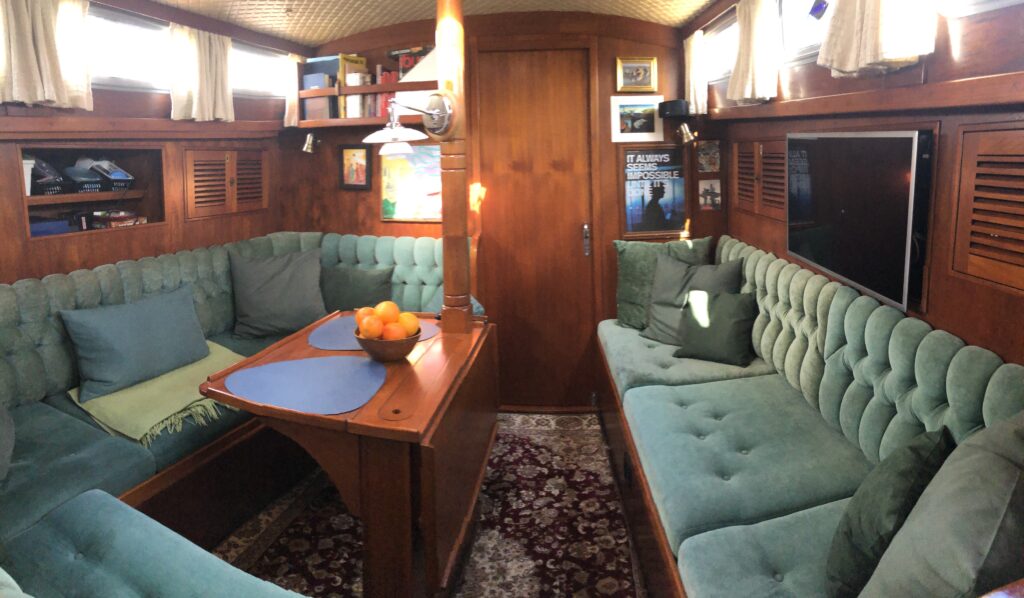Cappuccino on board
Alternative to espresso machine
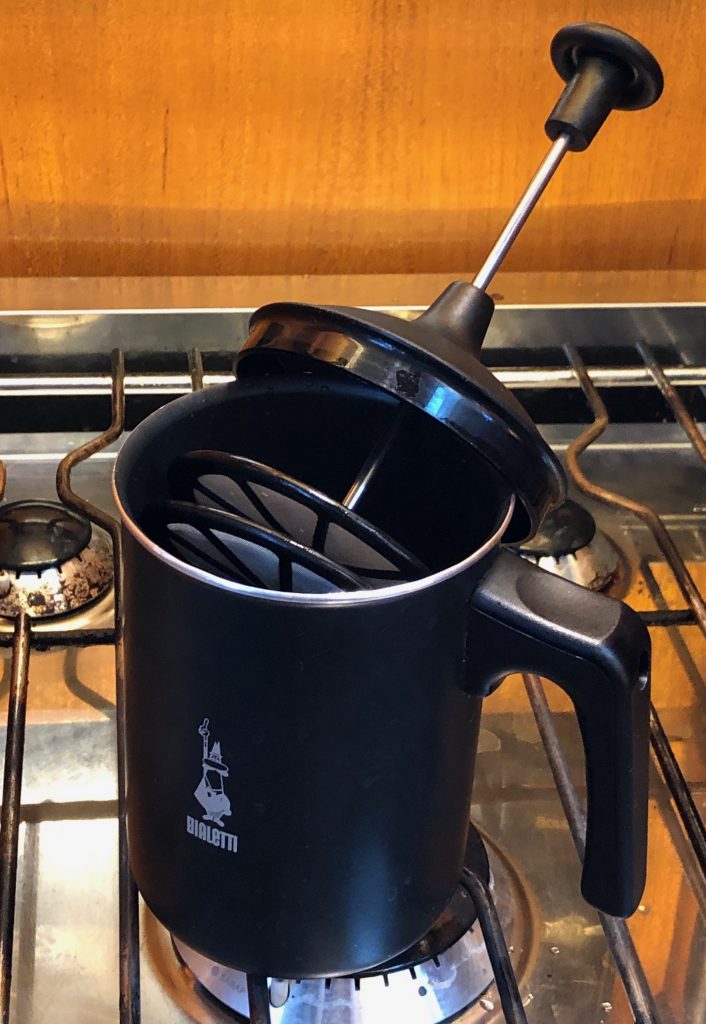
The only thing I really have missed from life ashore is my lovely espresso machine and its fantastic cappuccino.
Unfortunately, the limited kitchen space does not provide room for a large coffee machine. We also don’t always have enough power to be able to supply it.
Here, almost five years after moving aboard, I have found a solution that both takes little room and, to my taste, makes a good Cappuccino.
First I tried a regular cheap electric milk frother. But I couldn’t adjust the amount of foam and got way too much.
Then I have had a Bialetti Mukka Expresso cappuccino pot for several years. At first I used it with coffee beans, but it wasn’t great. Then I removed the coffee filter and mixed instant coffee into the milk. It has worked well for a few years, but it often happened that it foamed over before I could react. It broke recently and was sold out all around. So I went in search of another solution.
There are two secrets behind a good Cappuccino.
A good expresso
A milk frother that can make a rich hot milk, with an appropriate amount of foam.
A good espresso instant coffee is not quite as good as freshly made espresso made from freshly ground beans, but absolutely usable and easy.
Milk froth does not necessarily require a steam nozzle, the Bialetti milk frother shown in the picture does it almost as well with the help of a gas burner and manual power. Before foaming, I mix in instant coffee and a little sugar.
And on top of that, it is easy to deal with and easy to clean.
Cockpit tent
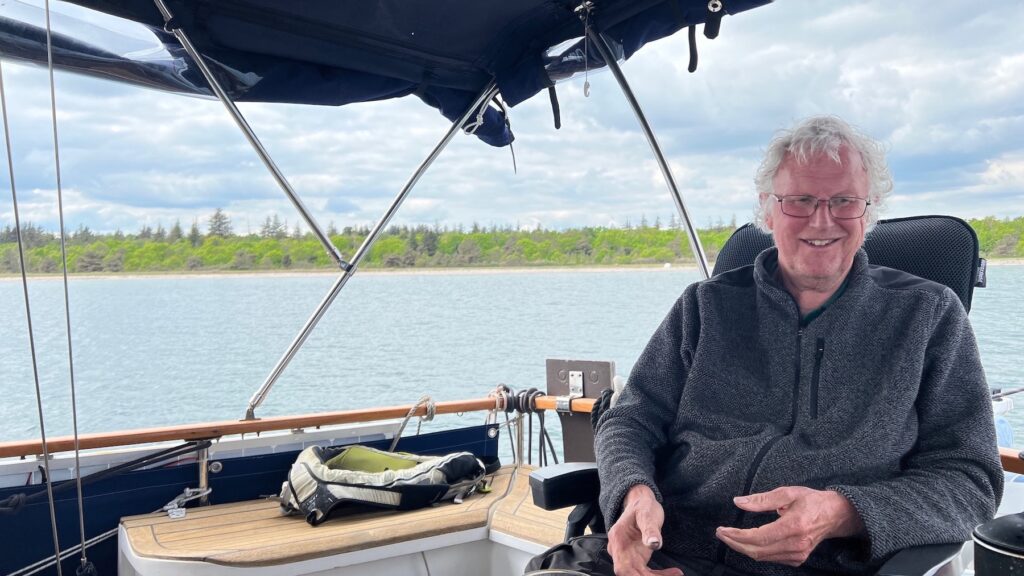
We love sitting outside on the aft deck, but we have lacked the possibility of being able to create shelter.
When we bought the boat, it included a bimini with corresponding shade sides. However, the bimini had to be sewn before it could be set up. In Denmark, it is often shelter rather than shade that is needed, especially on a relatively high and open aft deck, so the bimini was packed away for the time being.
Once at a boat show we have questioned one of the canopy sellers the possibilities of a tent for our yacht , but they were not interested in looking at the task at all, so it just died there and we made do with a few cut pieces of canvas that could be tied to the bimini stand and a loose tent pole.
Just before we left for the Mediterranean, the old bimini was found and repaired. It had to be mounted on the shrouds, which made it difficult to handle. This also prevented it from being used with the masts laid on the deck, so we had to make an extra one for that purpose.
The biminis worked brilliantly in the Mediterranean and we had even placed solar cells on the roof of the front part, but we didn’t dare leave it up in windy weather, so we had to take it all down several times. In addition, the bimini was a little too narrow, so you bumped your head against the shadow sides when you sat on the bench. But now the trip soon went back to the cooler fatherland, so we had a wish to get a better solution.
A Danish couple we met in Greece had got a new bimini and tent sewn by a local tent maker and was very satisfied, so we contacted the tent maker to brainstorm our ideas and get a price estimate.
Our thoughts were on having a fiberglass roof made for solar cells between the aft end of the mainsail boom and the mizzen mast. From this and aft, a new bimini and tent sides under both roof and bimini, which can be rolled up or completely removed, according to need. It was expensive even at Greek prices, but we judged that the utility of the tent would be worth the price.
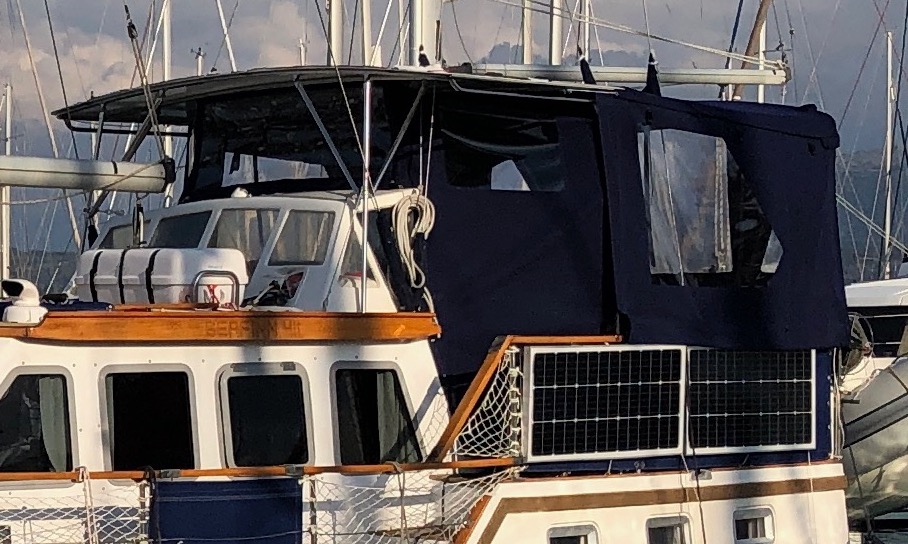
The new tent is very flexible in relation to both sun and especially wind, it is always possible to get shelter, and it is also possible to remove some of the bimini while the sides still provide shelter. The old shade sides have been sewn over so that they can be mounted on the new bimini.
Since both the mizzen mast and four shrouds go through the bimini, and since the sides stop at the guardrail, making the solar cells on the side still active with the tent sides mounted, the tent is not completely waterproof, so in rainy weather we place the cushions aft on a chair, where they stay dry.
Steel work, roof and tent were done in winter 2021/22 while we were in Lefkada, Greece, price approx. 8,000 Euro. We had it made by Takis Paspalidis, Yachtshelter Lefkada
New carpet and new cushions
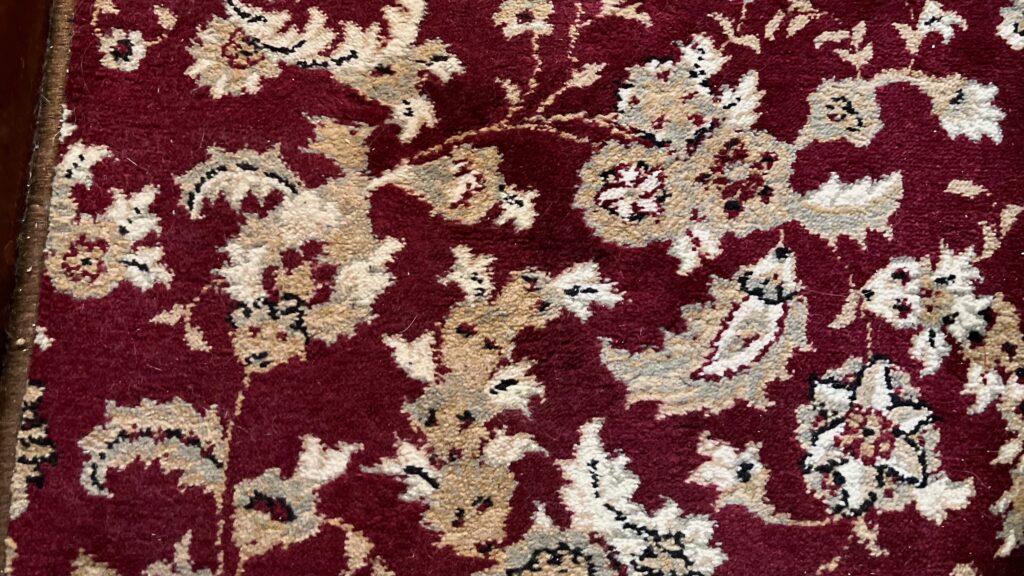
When we bought the boat, there was a “Persian” carpet on the floor in the salon. The previous owners understandably took the carpet with them, but we liked the expression and have since thought about having something similar. For various reasons, however, it has always ended up with a piece of wall-to-wall carpet with a rubber backing.
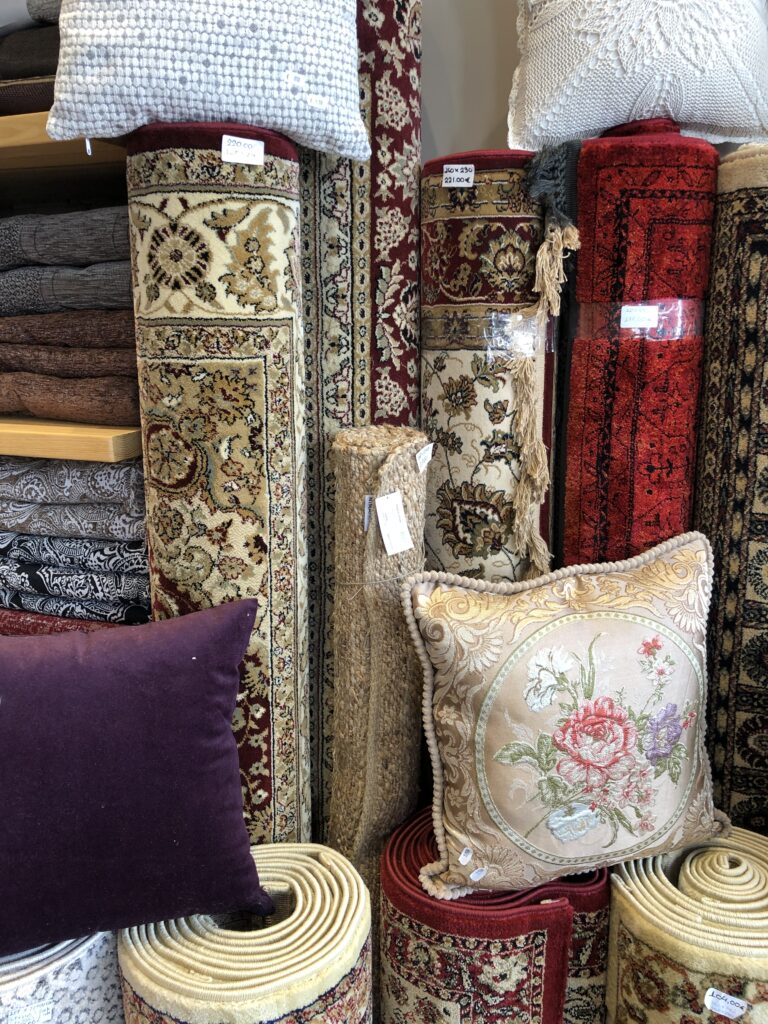
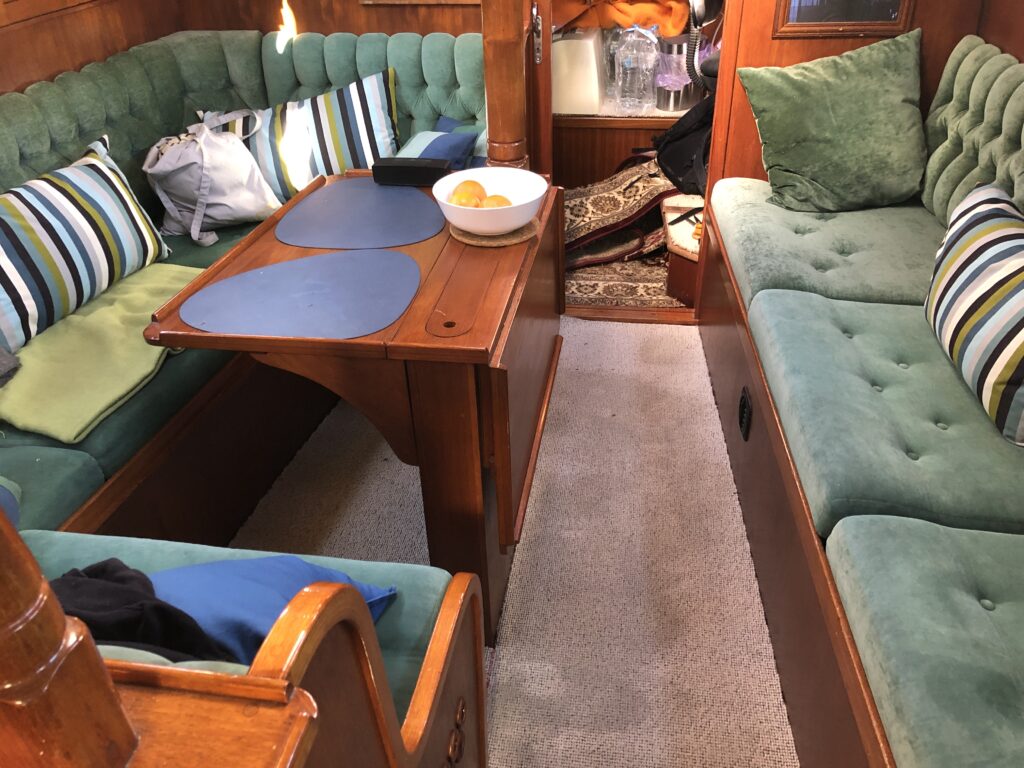
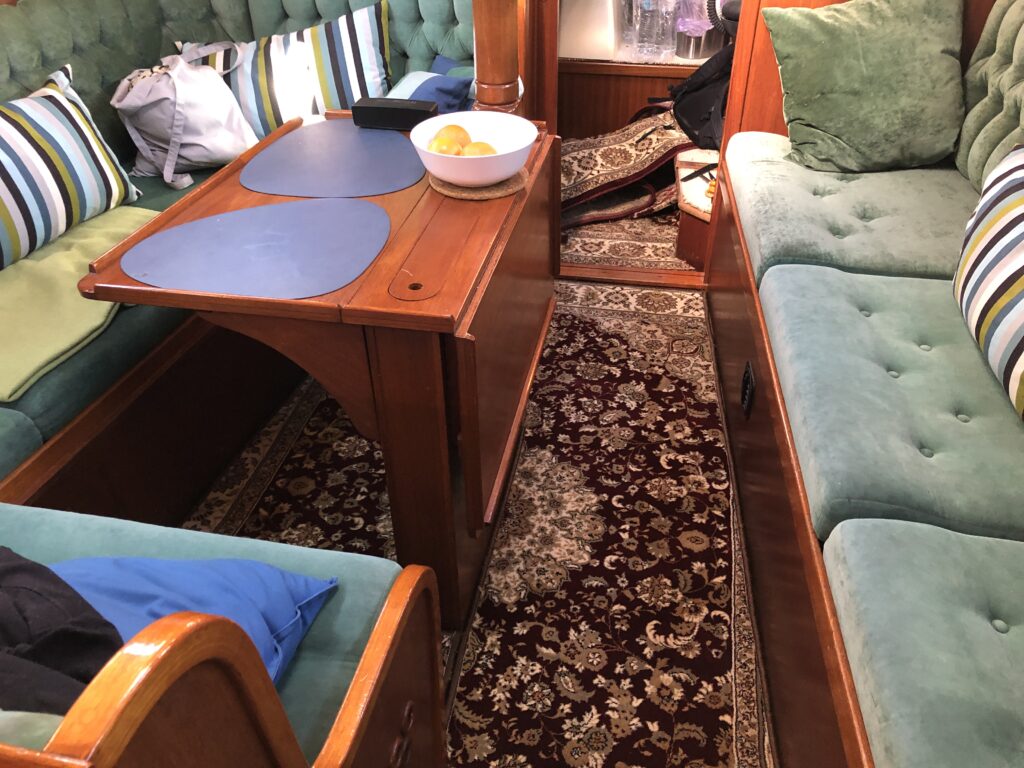
While we were wintering in Lefkada, I came across a shop on the pedestrian street with home textiles. They had some loose rugs in the style we wanted, and could also edge stitch them for us, although they had a little difficulty understanding why we would cut such a rug into pieces. So we bought a rug, went home and cut it to fit and returned it for stitching. The price for the edge stitching showed up to be ok, and there were a few pieces left that could be adapted to the fore cabin, so it also could get a new carpet in the same style – the door is usually open, so it’s nice that it fits together.
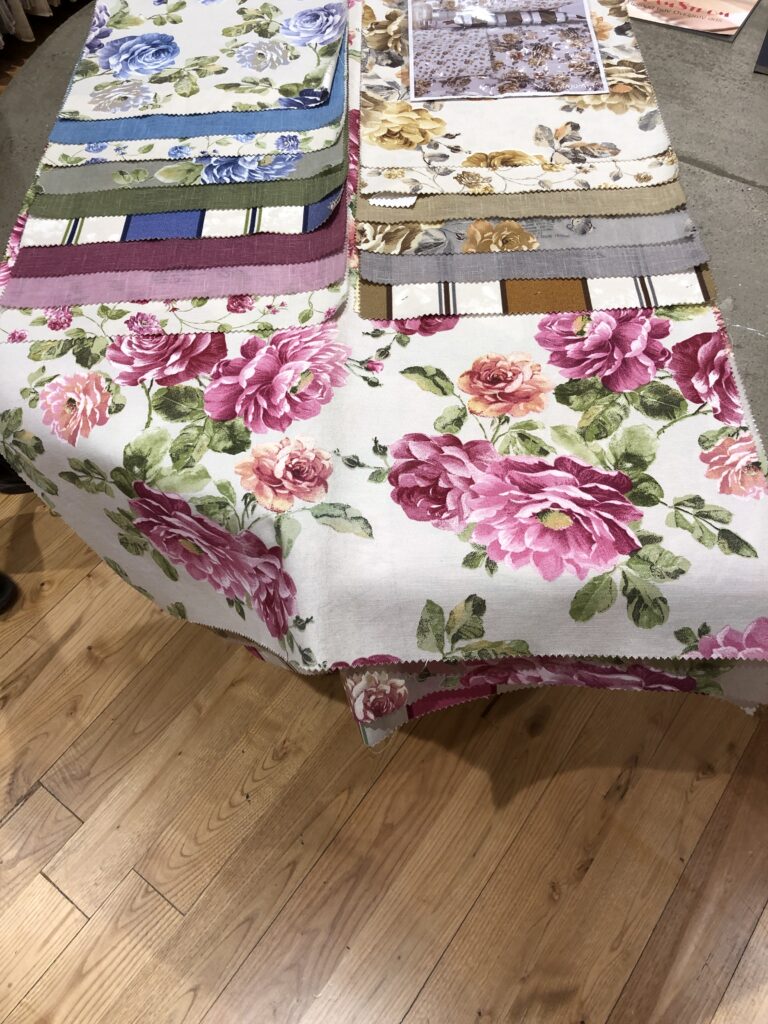
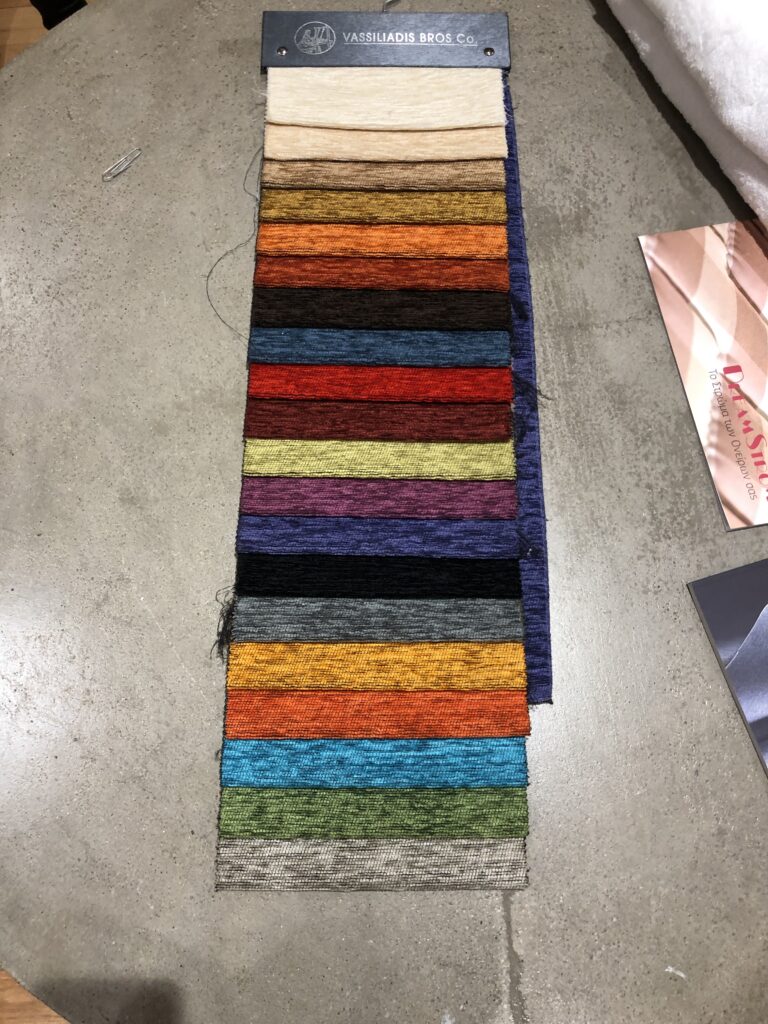
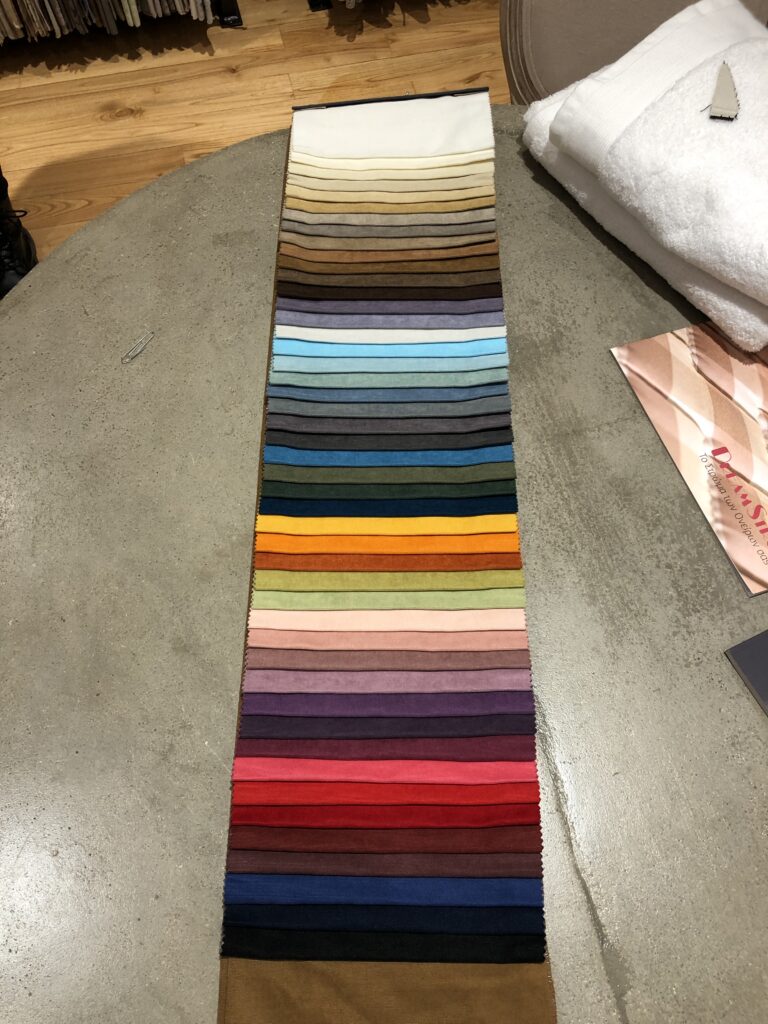
Now that the carpet was nice, it was time to do something about the cushions too. They didn’t fit in anymore, and maybe never had. But what to do? We had some ideas, but after trying different layouts giving the illusion of cushion covers, the conclusion was that green cushions in roughly the same shades as the sofa cushions were best. This gave peace in a room that is already very colorful.
